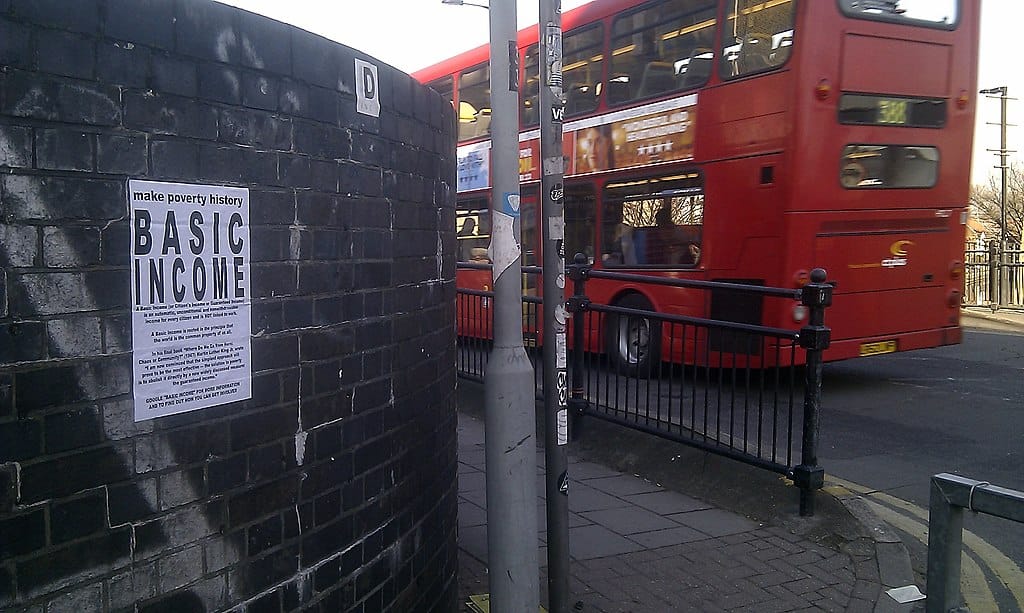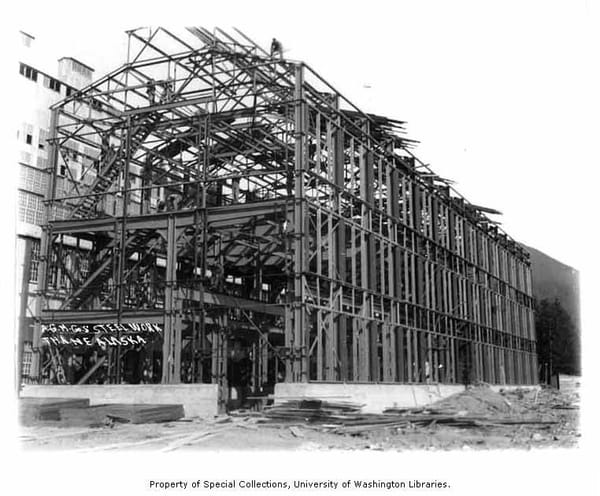A UBI in the United States May Necessitate Land Value Taxes
Towards a Georgist public finance regime for state level universal basic income.

“Pilot study shows effectiveness of Universal Basic Income” has essentially become an inside joke of a headline among those who follow economic and social policy, because we see it all the time. The number of pilot programs continues to grow, and the results are almost always positive. A pilot program in Stockton, California showed that, contrary to the expectations of many, a universal basic income increased employment rates for those who had it. A study in Denver found that $1000/month led to a measurable decrease in homelessness. And dozens of studies around the world have indicated positive impacts on social trust, mental health, and other measures of social and individual well-being. As anti-poverty interventions go, a universal basic income (that is, a fixed cash payment made to households with no strings attached) is well-studied and its effects understood. However, despite the popularity of COVID-19 cash payments during the height of the pandemic, movement towards a national UBI is nonexistent; indeed, since the pandemic, programs that resembled a UBI, such as the enhanced child tax credit, have been halted, based largely on concerns about employment and dependency that various pilot programs were intended to allay.
Why the discrepancy between a growing mountain of data and noticeable lack of action? Well, UBI is hardly unique in the category of ‘policies where legislation isn’t moving forward.’ The US Congress is pushed to its limits every couple months with the task of simply keeping the doors of the government open, cobbling together taxing and spending plans with continuing resolutions and last-minute deals. An overhaul to not just our budget but our way of life as extensive as that called for by a universal basic income is difficult to imagine garnering sixty votes in the Senate or making it to the House floor. Moreover, one strength of UBI from the standpoint of policy militates against its implementation through legislation: the very idea is too simple. There are relatively few opportunities to carve out exceptions or insert special favors into a UBI program without compromising the entire concept. This makes winning over skeptical Senators or Representatives more difficult. And another possibility—a charismatic president sweeps into office and works across the aisle to bring about policy change—was already attempted by presidential candidate Andrew Yang, whose campaign attracted attention and a devoted following but never a significant number of votes.
The best answer is likely to look at the last major reform to the US economic system (besides straightforward tax cuts)—the Affordable Care Act. This massive legislation was no one’s idea of a perfect bill but managed to pass because it was phased in gradually—and built on a model already tried and tested in Massachusetts. If ever a national UBI is to be attempted, a similar statewide model is a necessary (though far, far from sufficient) condition. An energetic, and almost certainly Democratic-controlled (since we appear to be fresh out of Romneys), state government is going to need to lead the charge on UBI, showing that it works on a grand scale to even begin a movement to expand it nationally. A success in one state will hopefully be contagious—as the gradual expansion of Medicaid has shown, it is difficult for even the most conservative states to ‘hold the line’ against humanitarian programs once they have proven themselves elsewhere.
Starting with one state, however, introduces new difficulties. For many proponents of a UBI, the question of how to pay for such a program is less difficult. The Federal government has extensive revenue generating options, from a more progressive income tax to a more expansive payroll tax. High taxes can rarely force American citizens out of the country entirely, because they still owe income taxes so long as they are citizens, and renouncing citizenship is very rare. Besides, the government has enormous borrowing capacity and, as a monetary sovereign, cannot strictly speaking ‘run out’ of money. For states, the situation is different. They are not monetary sovereigns and many are constitutionally obligated to balance their budgets. If they seek to pay their residents some regular dividend, they need to raise the money in some way. And the sums in question are not trivial. A $1000/month dividend would cost the state of Minnesota—to take an example of a state that has historically been open to major reforms with slight legislative majorities—would cost roughly $68 billion just in payments, to say nothing of administrative costs. For reference, the entire Minnesota state budget is $72 billion, with only a portion of that being displaceable by UBI. A new source of funding is desperately needed.
This produces a bit of a problem for the gradualism strategy, however. The first state or states to adopt a UBI face an issue of adverse selection much more severe than the Federal government does: individuals with few job prospects might find it worth relocating, especially from nearby states, to establish a minimum income for themselves, whereas higher income individuals or companies subjected to taxes to pay for the UBI might similarly cross state borders to lower their tax bills. These problems are especially acute in the face of income or sales taxes, but even traditional property tax revenues will likely suffer—after all, the sort of big, expensive property development that tends to bring in substantial revenue will also be discouraged if property taxes rise to cover a UBI.
This is where an old idea, however, may come in handy—that of a land value tax. Championed by a diverse array of figures historically, from the French physiocrat Francois Quesnay to American journalist and activist Henry George, the idea has re-emerged, particularly in urbanist circles, in taxation discourse. The benefit to such a scheme is that, unlike income or even real property, the quantity of land is generally speaking fixed—so no statewide tax is going to drive land across the border, and if it drives landowners out of state, they can’t take their land with them and one way or another it will be available for alternative use. In economic terms, the supply of land is perfectly inelastic, and thus the deadweight loss of the tax does not exist so long as the land value tax is less than or equal to the rental value of land (though calculating rental value can get progressively more difficult as the tax approaches a greater percentage of it).
Moreover, it is unlikely that land value taxes would seriously degrade the value of land, if they were used to fund a UBI. As David Ricardo postulated in the early 1800s, the value of land is based on its economic productivity relative to a free piece of ground. Of course, a UBI would not have a substantial impact on the agricultural productivity of land, which was Ricardo’s primary concern, but would certainly impact its economic productivity, as cities and town located in a state with a UBI would benefit from steadier consumers with more consistent incomes. In many cases this increase in disposable income, especially noticeable for lower income households, would likely outweigh the cost of increased taxes on land ownership. But even if it did not, and some firms sold their property in state, the economy would not have lost any real resources and the falling demand for land would likely improve its affordability for other uses.
The possible revenue raised in this way is difficult to calculate, particular because American cities—with limited exceptions—do not consistently assess land and real property as truly separate asset classes. However, some of the best estimates put the value of just urban land in 2006 at twice US GDP. For states hosting the most valuable cities, like San Francisco and New York, the hundreds of billions of land value the cities sit on might be enough to fund a UBI on their own. To return to our example of Minnesota, the revenues would likely be somewhat less—Minneapolis (the most valuable city in the State) land values are more like $11 billion, so a 2-3% land value tax would likely not be, on its own, enough to capture the revenue needed to independently fund a UBI. But given the likely impact of a UBI in improving the health and stability of citizens—and thus reducing the strain on state coffers of other programs—its ability to close the gap might be greater than expected. And absent any kind of land value capture, a UBI may end up primarily enriching landlords at the expense of whomever is paying the taxes to fund it.
What’s almost certain is that without tapping into this source of revenue, it is unlikely that a paid-with-taxes UBI will be able to achieve its full potential on a State level—and given the current state of congress the State level is almost certainly the place we must start. Though both may feel too far outside the political economy we’re used to in the United States, a Universal Basic Income and a revenue raising land value tax system are deeply complementary policies that offer substantial benefits for our future. If states are laboratories of democracy, it’s about time these two policies be put to the test together.
Featured image is Make Poverty History, by stanjourdan




